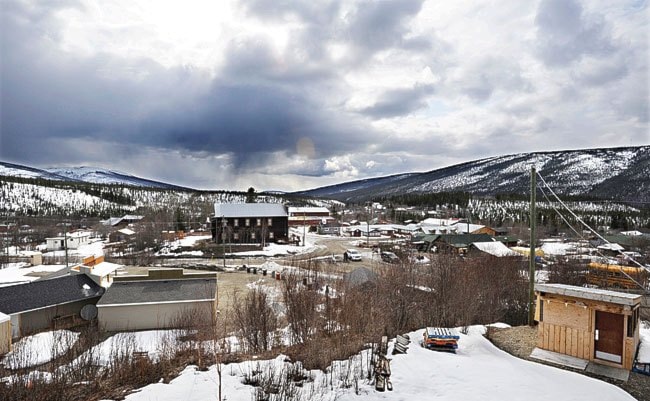Some residents of Keno are fed up with mining activity too close to town, and are ready to pack it in.
“There’s very few of us left, and we want the hell out,” said Jim Milley, who owns the Sourdough Cafe in town.
The town’s permanent, year-round population has dropped from about 30 before production began at Alexco’s Bellekeno mine to seven, said Milley.
If residents had known that the company would be allowed to operate so close to town, they wouldn’t have put so much energy into developing a local tourism industry, he said.
“Why wasn’t I told that before I invested hundreds of thousands of dollars in this community?”
The problem has been that different Yukon government departments have conflicting aims for the town, he said.
While Tourism and Community Services are encouraging residents to stay and develop businesses, Energy, Mines and Resources would prefer to see the town pushed aside for the benefit of industry, said Milley.
“What is the government’s plan?” he asked. “We had one. People were spending a fortune to develop a tourism market.
“Keno is a resilient little town, but there’s only so much it can take.”
Nine residents signed a petition in 2012 calling on the government to buy them out so they could set up somewhere else.
But the government will not do that, Brad Cathers told the legislature in December 2012, when he was minister of Energy, Mines and Resources.
“The government is working hard to ensure the community benefits from mining activity in the area. The goal is to ensure that mining in the community of Keno can co-exist and, Mr. Speaker, we believe this is the case.
“For that reason, we do not believe compensating Keno residents who wish to leave would be consistent with either the goal of supporting development in that area or government’s obligations.”
Ramsey Hart, co-ordinator with Mining Watch Canada, visited the community in September. He said the overwhelming impression he got was of the historic mining messes left behind.
“The tailings down in the valley, the machinery scattered around Keno - that stands out against the love and interest and enthusiasm the local residents have for that place and their interest in trying to make a go of it there.”
And as Alexco continues to permit more mining in the area, its operations are of increasing concern to residents, he said.
The original Bellekeno mine had an anticipated project life of about five years. But as the company explores and permits more deposits, residents are left with uncertainty about the future of their community.
Alexco’s planned Flame and Moth mine is now before the Yukon Environmental and Socio-economic Assessment Board. Assessors are now seeking public comment on that proposal.
The company already has permits in place to mine the Onek and Lucky Queen deposits.
“That’s happening in a way that hasn’t really been transparent or hasn’t really considered the cumulative effects or the growing degree of impacts of all these different projects,” said Hart.
“Mining is a dusty, noisy business, no matter how modern your mining operation is. The ability of that kind of heavy industry to co-exist alongside the kind of tourism and the activities that the folks in Keno were trying to develop would be a real, real challenge, if not quite impossible.”
The Yukon government completed a health impact study for the town of Keno in 2012, and updated it this year.
Brendan Hanley, Yukon’s chief medical officer of health, said in an interview last month that uncertainty about the community’s future has real health implications for residents.
“In some ways the biggest health effect is the stress of having mining in a community.
“That’s difficult to deal with - that uncertainty. It’s definitely a significant stress for the community. How do you plan for the community 10, 15, 20 years from now? Is it still going to be mining? Is the mining going to shut down? If it shuts down, will it be back to tourism?”
When Bellekeno was in the permitting process, residents were under the impression that the mill near town would only be there for a few years, he said.
Now, “we’re seeing these add-on phases all the time.”
Clynt Nauman, president of Alexco, said in an interview this week that the mill was never intended or permitted as a temporary facility.
He absolutely believes that mining can co-exist with the community, he said.
“We go to quite some length to communicate with the community and try to work with them in terms of the various activities that are going on in the district.”
In Canada and internationally there are lots of examples of communities closely knit with mining activities, said Nauman.
Alexco suspended operations at Bellekeno in September in response to declining silver prices. Although the mill has not operated since then, an extensive drilling exploration program in the area is now underway.
The company is working hard to make sure that when the mine goes back into production that the production can be sustained, said Nauman.
It is also working on getting permits in place for the Flame and Moth mine.
The Yukon Environmental and Socio-economic Assessment Board will accept public comments on the Flame and Moth proposal through May 2.
Contact Jacqueline Ronson at
jronson@yukon-news.com
